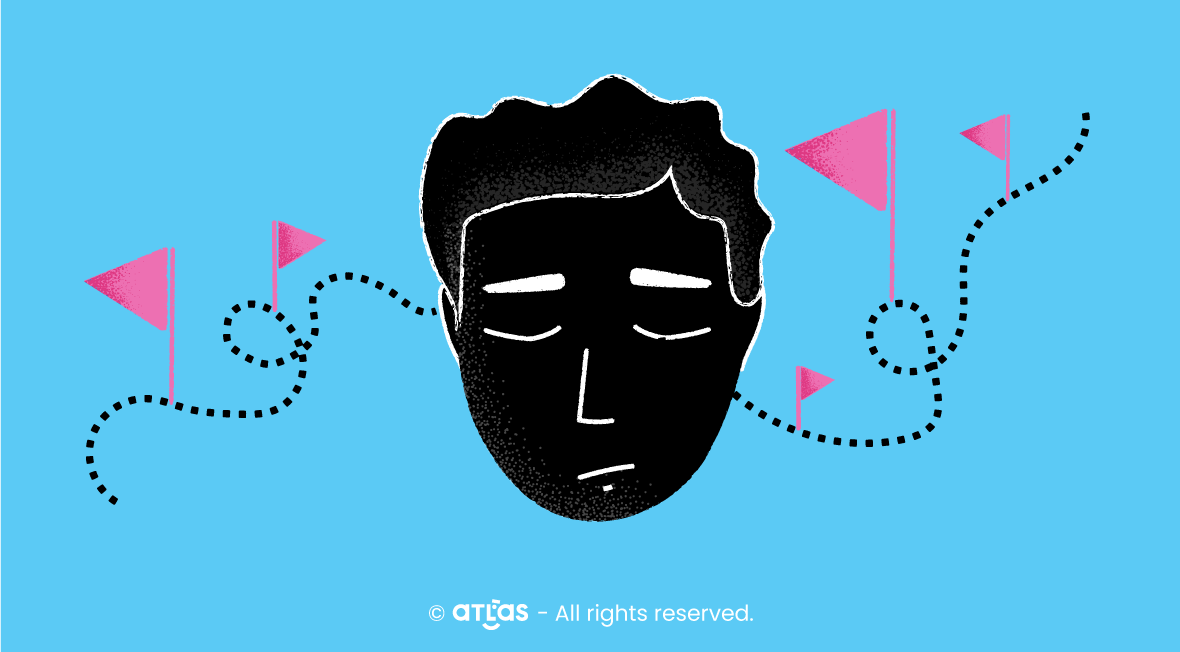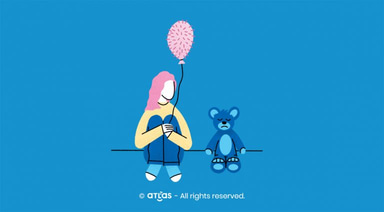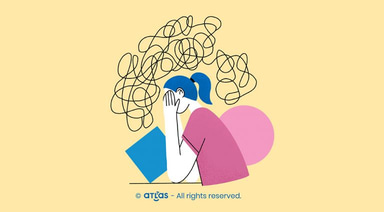Each patient suffering from a mood disorder goes through several stages towards improving their condition. We know these steps under the name of “The 5 R“:
- The response to treatment – a 50% reduction in the symptoms of a depressive episode
- Remission – a reduction in symptoms until it reaches a “good mood”
- Recovery – maintaining remission
- Return disorder – symptoms getting worse after treatment response or remission
- Recurrence – the emergence of a new depressive episode after recovery
Depression must be effectively treated from the first episode. The consequence of inadequate treatment could be an incomplete remission, which can lead to structural changes in the brain, sub-therapeutic resistance, and somatic consequences.
It is important to consult a doctor from the first symptoms of depression!
Incomplete remission leads to risks as follow:
- the occurrence of frequent relapses (multiple depressive episodes)
- therapeutic resistance
- modification of neurobiological and neurobiochemical ratio
- somatic complications
There is a direct report between the number of depressive episodes the quality of remission in each of these episodes and the preservation of synaptic protection. It is generally considered that for the first 3 episodes if the remission was of good quality and the interval between episodes was at least 9 months, synapse can still be considered plastic, the person having the chance of a full recovery.
What does the response to treatment mean?

The onset of depression in a patient who has never known depressive episodes in the past may occur suddenly or gradually.
The Prodromal period is the period that announces the occurrence and installation of a depressive episode (the period in which symptoms are exacerbating) is present in over 50% of patients with major depressive episodes.
The patient with a first major depressive episode gets to recover after such a disorder, even if it is not completely treated. The average period of a depressive episode is approximately 6 months, with a maximum recovery effect within the first 3 months of treatment. Because the types and manifestations of depression are multiple and vary from one person to another, so does the Prodromal period – the period of development of symptoms.
Some people experience a wide range of symptoms in the months before the onset of mood disorder, including:
- anxiety,
- phobia,
- minor symptoms of depression,
- panic attacks.
Other people may develop major symptoms much faster, mainly if they have just gone through an extremely stressful period.
80% of people who suffer for the first time by a mood disorder are more likely exposed to having at least another mood disorder throughout their lifetime.
If you are at the first depressive episodes, you have a great chance to experience complete remission in case of fair, specialised treatment.
15-20% of patients end up developing a chronic depressive episode with persistent symptoms for about 2 years. 5-10% of people in the first major depressive episode end up developing bipolar disorder.
Stages of treatment of first depressive episodes

Antidepressants are part of the basic treatment for moderate or severe depression or for mild depression that persists for more than 3 months.
As a result of its recurrent nature, treatment for depression involves 3 stages, each focusing on another aspect of the disorder:
1. Acute stage – to induce remission
2. Continuity stage-with the aim of maintaining remission and prevention of relapse (the return of the initial depressive episode)
3. Maintenance phase – aimed at preventing recurrence of a new depression episode
Maintenance treatment is recommended for patients with an increased risk of recurrence and may last from several months to a period of 1-2 years.
The response to treatment in the first depressive episodes is:
- qualitatively – a significant reduction in symptoms and regaining hope for life
- quantitatively – an improvement of 50% of the results of HAM-D and MADRS tests.
Depressive episode remission

Complete remission in the event of a first major depressive episode takes into account the fact that the person suffering from mood disorder feels a minimization of symptoms and a return to normal life. Remission is complete if the patient no longer exhibits typical depression symptoms for at least 2 months.
Partial remission in the event of a first major depressive episode occurs when the person with mood disorder no longer fulfils the criteria of the major depressive episode. She also has minimal symptoms for at least 2 months. Risk factors of partial remission are :
- increased severity,
- chronicity of the disorder,
- comorbidity.
Incomplete remission is to relieve symptoms that do not completely disappear. It is associated with increased risk of rebound disorder, decreased operating capacity in the workplace or the social environment, increased risk of suicide.
Recovering from the depressive episode

Recovery after a first depressive episode occurs after the patient has had a complete remission for about 6 months. Also, depressive episodes have been recorded after 2-3 months after the last episode, in a patient who is no longer under treatment.
Many of the people who had a major depressive episode at the end of the recovery period may still have residual symptoms. They consist of:
- sleep disturbances,
- fatigue,
- lack of interest and involvement in the surrounding activities.
Residual symptoms arise as a result of the existence of comorbidity, residual depressive symptoms and an inadequate response to treatment.
Return and recurrence of depressive episode

Risk factors favouring the recurrence of depression are:
- Onset of depressive episode at an early age (under 20 years)
- Installation of depression at an advanced age
- Chronic depression (an episode lasting over 2 years)
- Comorbid disorders (personality disorder, substance abuse, anxiety)
Recurrence involves the emergence of depressive symptoms in a new major depressive episode. Recurrence occurs after 2-3 depressive episodes. The more depressive episodes you suffer, the more likely the occurrence of recurrence. This is why it is important to present yourself in time to the psychiatrist to receive the appropriate treatment.
An essential first step is information about what therapeutic treatment entails!



